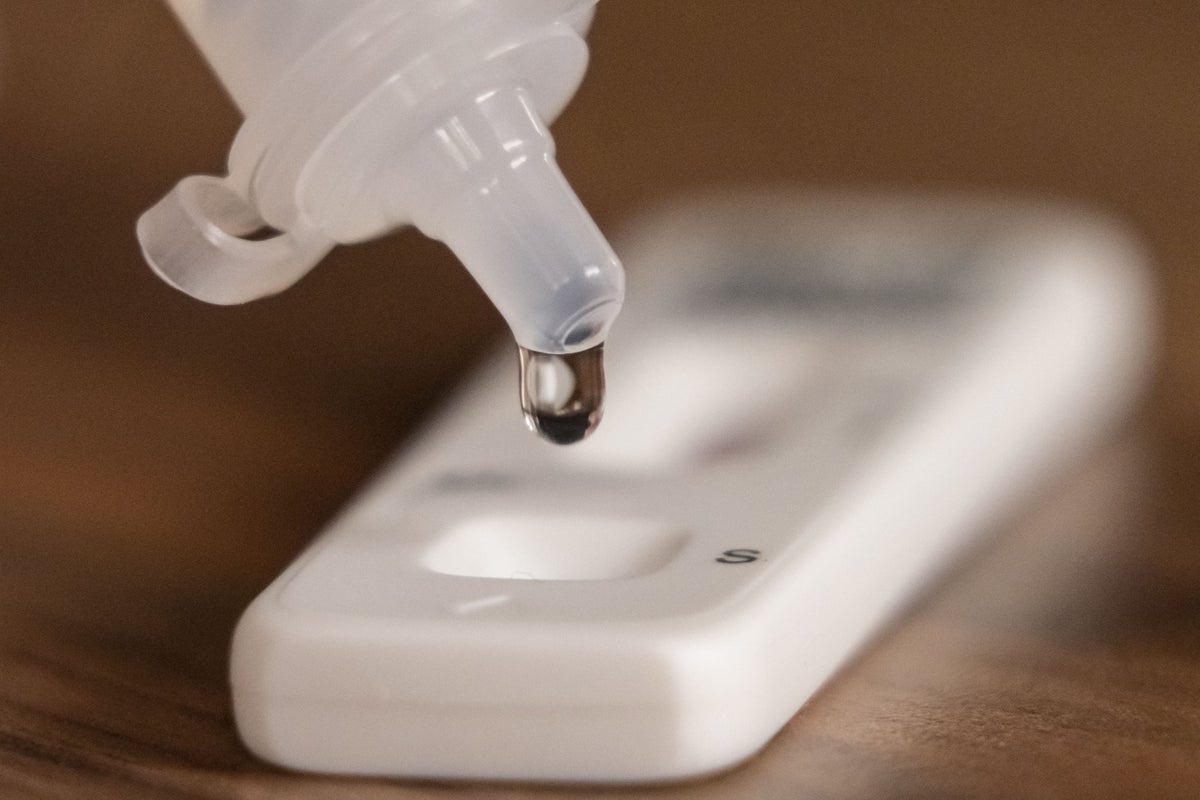
The final official estimates of Covid-19 in the UK show infections in England have climbed to their highest level since the start of the year.
The trend in Scotland, Wales and Northern Ireland is uncertain, though there are signs the virus is continuing to become more prevalent.
It is the last time that regular estimates of coronavirus are being published, as the long-running infection survey – dubbed the “envy of the world” for its success in tracking the virus – has been halted.
Any further monitoring of Covid-19 will be announced after a review to ensure it is “cost effective”, according to the UK Health Security Agency.
An estimated 1.5 million people in private households in England were likely to have had coronavirus in the week ending March 13, up from 1.3 million in the previous week, according to the Office for National Statistics (ONS).
It is the highest total for England since the week to January 3, when the total stood at 2.2 million.
There is greater uncertainty in the latest figures for Scotland and Wales due to a low number of samples received by the ONS, while too few samples were returned in Northern Ireland to produce a new estimate.
Some 136,200 people in Scotland were likely to have Covid-19 in the week to March 13, or around one in 40, compared with 105,100 or one in 50 the previous week.
The latest estimate for Wales is 74,500, or one in 40, compared with 68,200 or one in 45.
Michelle Bowen, ONS head of health surveillance dissemination, said: “This week’s data show infections are rising in England; however, the trend is uncertain across the rest of the UK.
“In England, positivity increased in children and those aged 50 and over.
“The North West, East Midlands and South East of England all saw infections increase, though the trend is uncertain in all other regions.”
The infection survey has run continuously for nearly three years, providing valuable weekly data on levels of Covid-19 across the UK and allowing successive waves of the virus to be identified and tracked.
It has also supplied crucial information on the emergence of new variants, antibody levels and long Covid.
The survey collected tests from households regardless of whether participants knew they had Covid-19, or if they were reporting results to the NHS, meaning it provided a snapshot of the true spread of the virus, which was often underestimated by Government figures.
Sir David Spiegelhalter, emeritus professor of statistics at Cambridge University and chairman of the advisory board for the survey, told the PA news agency it had been an “extraordinary achievement” which has provided “vital evidence of great value both to national policy and international scientific understanding”.
The survey has been the envy of the world and is a jewel in the crown of UK science— Sir David Spiegelhalter
He continued: “There is a general consensus that the survey has been a world-leading demonstration of how health surveillance can best be done. It is expensive, and this has led to it being paused, but the participant group is not being disbanded and a survey should be able to ramp up when necessary.
“Meanwhile there are important lessons to be learned for future emergencies, both by us and every other country. The survey has been the envy of the world and is a jewel in the crown of UK science.”
The survey was rolled out across the UK during summer 2020, just after the first wave of the virus.
It has measured every wave since then, with its figures revealing the biggest wave came in spring 2022 when weekly infections hit 4.9 million, followed by winter 2021/22, which peaked at 4.3 million.
In recent months the survey has helped track the scale and progress of the Christmas 2022 wave, which peaked at nearly three million infections, as well as the latest rise in prevalence.
The halting of the survey comes as the rate of hospital admissions in England for people with Covid-19 rose for the third week in a row, to 10.6 per 100,000 people in the seven days to March 19 – the highest level since the start of January.
In the absence of official estimates of Covid-19, hospital admissions will be one of the few remaining sources of data to give any sense of the spread of the virus, along with death registrations.
The final figures from the infection survey show the percentage of people aged 70 and over in England likely to test positive for Covid-19 is estimated to be 4.5%, up from 3.1% a week earlier.
This is the highest positivity for any age group.
The rate is up from 1.4% to 2.1% among children in school years 7 to 11.







